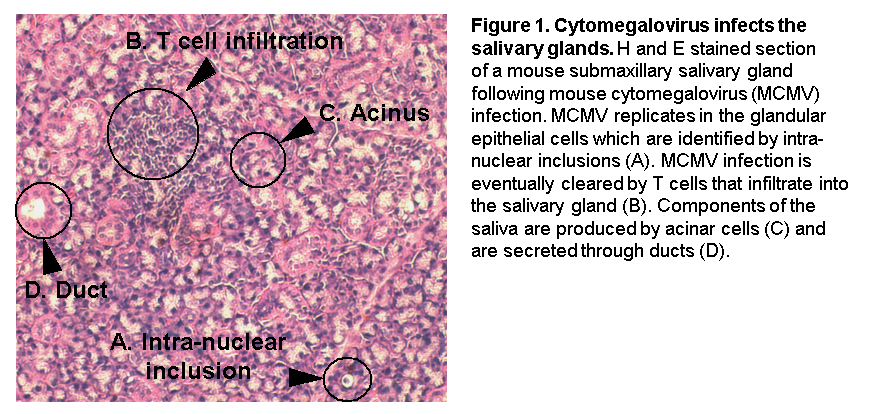BiteSized Immunology: Organs & Tissues

Immunity in the salivary gland
There are numerous small salivary glands within the tongue, lips cheeks and palate. Humans also have four large glands termed the parotid, submaxillary, submandibular and sublingual salivary glands. Collectively, the primary function of these glands is the production and secretion of saliva. The components of saliva are produced by serous and mucous acinar cells within the glands, and saliva is then drained though a network of ducts into the oral cavity.
Aside from the production of saliva, the large salivary glands also help protect us from the numerous microbes that we are constantly exposed to through our mouth. Plasma B cells reside in the salivary glands and produce IgA antibody which is then secreted in the saliva. IgA binds the mucus layer that covers the epithelia lining of the oral cavity, thus providing a barrier against potentially dangerous pathogens.
As part of the oral mucosal system, the salivary gland is also exposed to a large number of harmless antigens in the form of foods. To ensure that our white blood cells do not react to these proteins, immune responses in the salivary glands are tightly regulated. One mechanism by which regulation occurs is through the production of a suppressive immune molecule (cytokine) called transforming growth factor–b (TGF–b). TGF–b limits the expansion of T and B cells and inhibits their ability to induce inflammation, therefore preventing accidental tissue damage that may otherwise be triggered by food.

Mechanisms employed by our immune system to stop reactivity to harmless antigens can also be exploited by unwanted pathogens. Viruses including human cytomegalovirus (HCMV) and Epstein-Barr virus (EBV) can spread via infected saliva. In the case of cytomegalovirus, virus infection of the salivary gland (Figure 1) triggers the production of another immune suppressive cytokine called interleukin-10 (IL-10). Like TGF-b , IL-10 can inhibit the accumulation and function of T cells in the salivary glands. Because T cells are required to kill cytomegalovirus, IL-10 mediated inhibition of these cells results in persistent viral replication in, and dissemination from, the salivary glands.
© The copyright for this work resides with the author.
